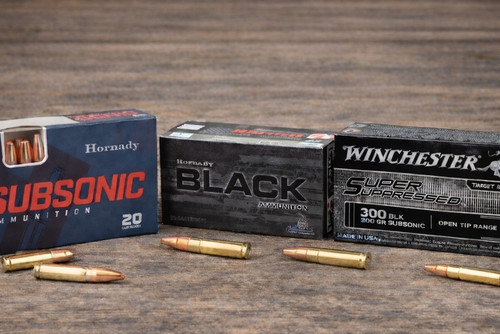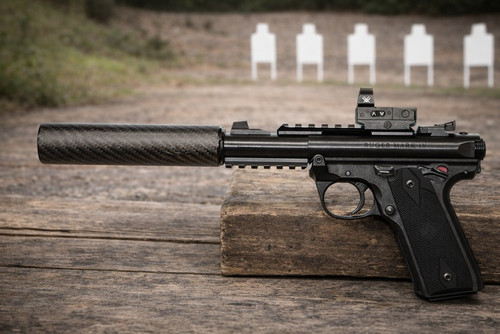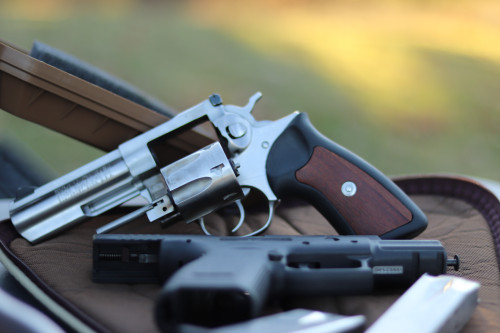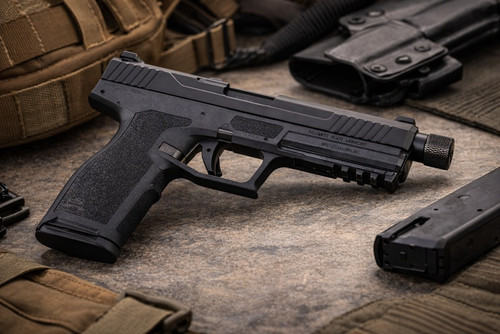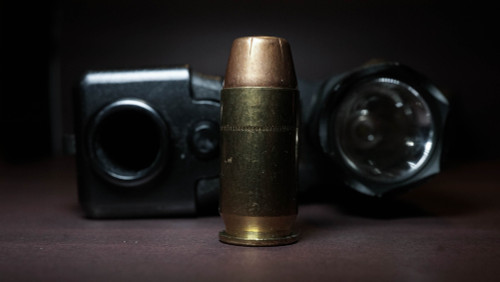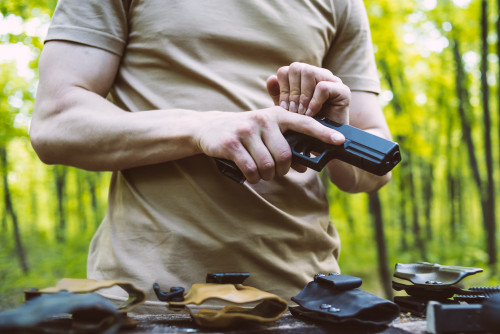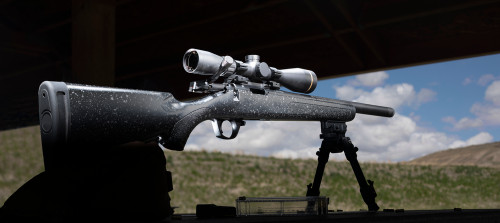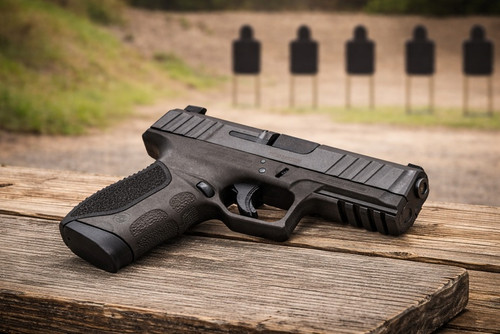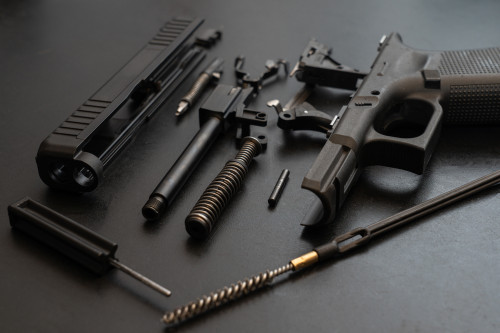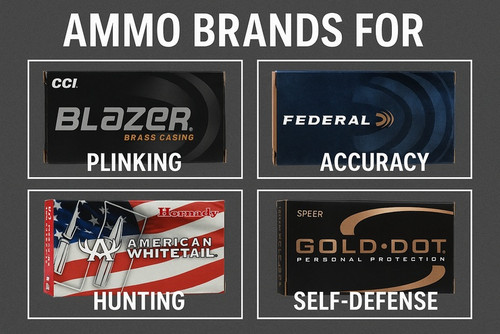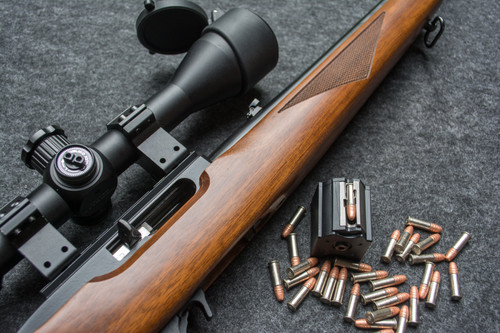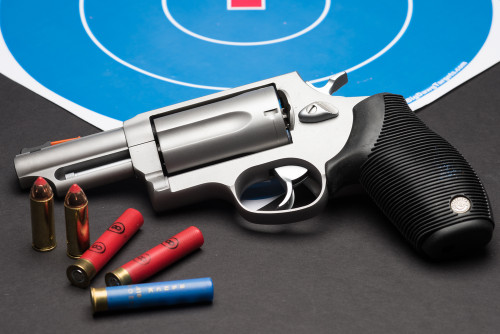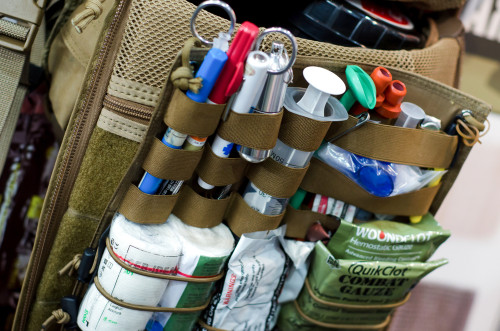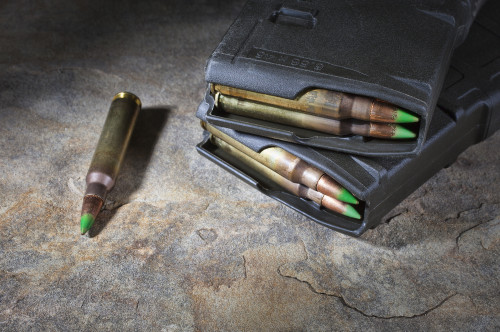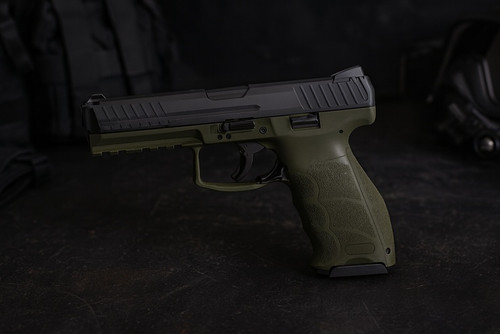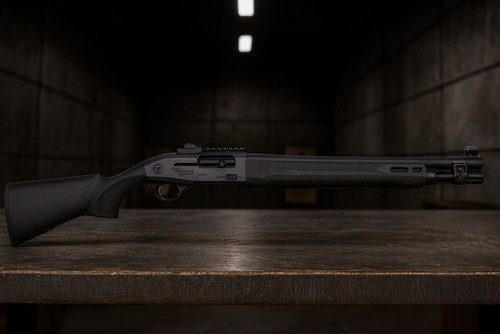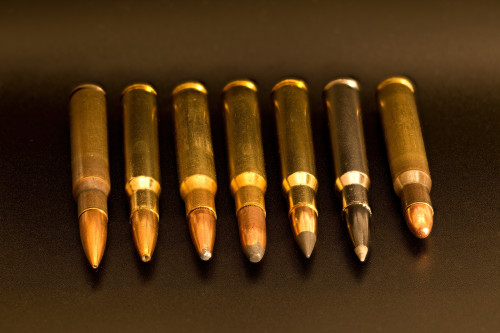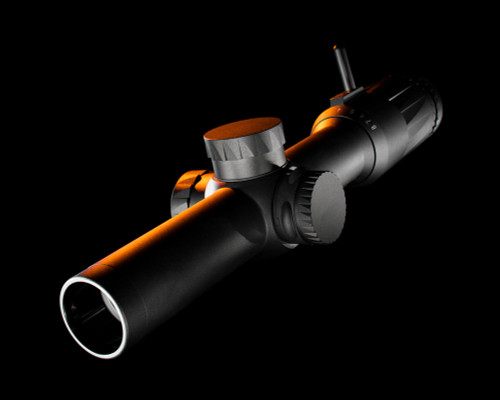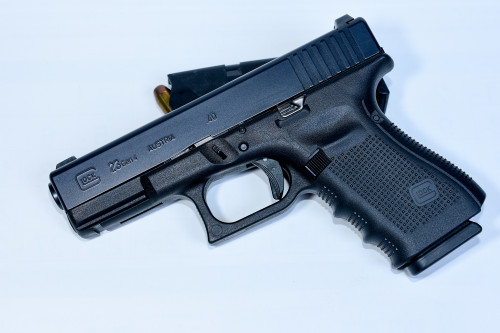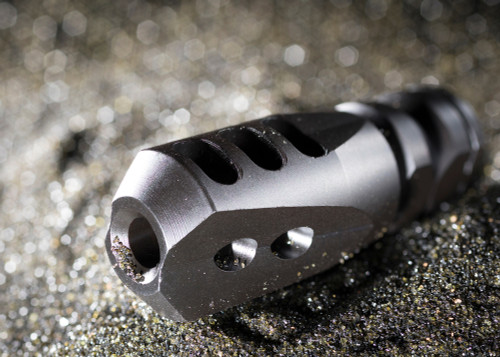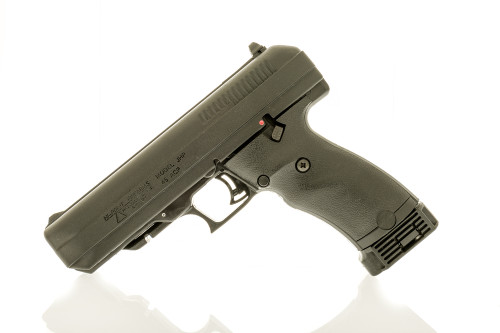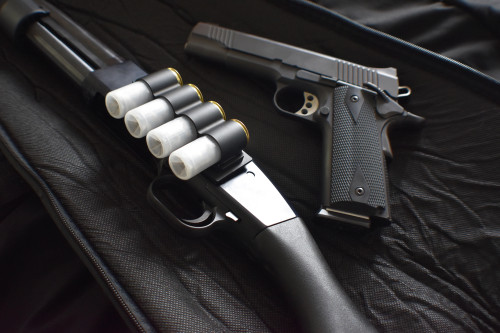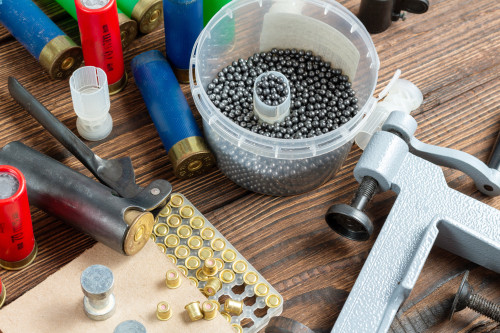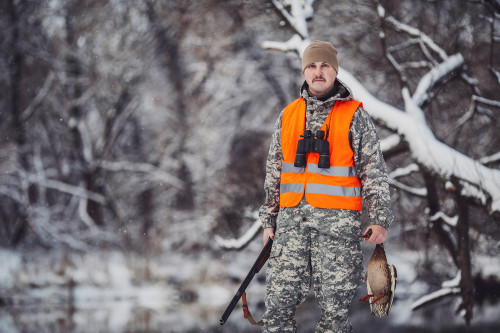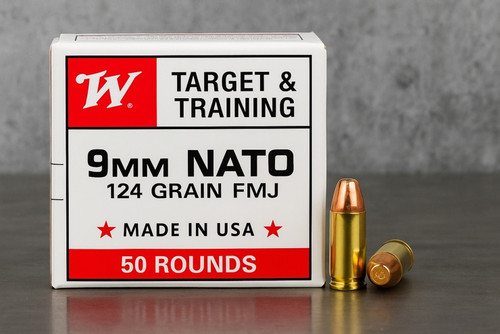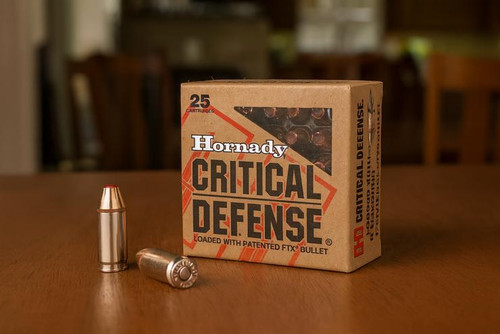The AR-15 really is “America’s Rifle.” There are likely more than 44 million AR-15s in civilian hands today. That’s 10% of all guns in the US, and almost double the number of AKs (the next most-popular intermediate cartridge rifle in the country).
This adaptable weapons platform is beloved by shooters for competition, home defense, hunting, and plinking. Why? Because the platform is so easy to tweak to work for any of these shooting goals.
However, putting together an AR-15 can be a tall order. Do you stick with budget options, or ball out on Gucci gear like an Aimpoint red dot? We’ll help you make the right decision(s) for your shooting goals in this comprehensive guide to setting up the perfect AR-15.
Understanding the Components
The AR-15 breaks down into two major components: the upper and lower receivers. Then, there are attachments and accessories, which determine the majority of your AR’s performance. Here are the tasks that each completes and the specific parts they require.
Lower Receiver
The lower receiver is the serialized part of the AR-15 platform, meaning it’s what the ATF considers to be a “firearm.“ Once you get a lower receiver and pass a background check, you can get every other part of an AR-15 shipped directly to your home. This makes building an AR super easy.
The lower receiver is the part of the gun that “receives” the magazine and houses the trigger group. It’s the part that your body interfaces with to fire the gun.
One pro tip about lower receivers: you don’t need to drop a lot of money on them. If you want the “budget option” of any AR part, make it the lower receiver and its other parts (except the trigger group — that’s too important to go cheap on).
Here’s a list of all the parts that make up a completed lower receiver:
- Stripped lower receiver
- Trigger guard and roll pin
- Grip screw
- Safety selector, detent, and spring
- Pivot/takedown detents and springs
- Pivot and takedown pins
- Buffer pin and spring
- Bolt release, bolt release plunger, spring, and roll pin
- Mag catch, mag catch button, and mag catch spring
- Trigger pin
- Hammer pin
- Hammer assembly (hammer and hammer spring)
- Trigger assembly (trigger, trigger spring, disconnector spring)
- Disconnector
- Pistol grip
- Buffer tube
- Stock
You can get all of these parts assembled as a “complete” lower receiver. Or, you can buy the individual parts and build the lower receiver yourself from a “stripped” lower. If you want complete control of the parts that go into your AR-15, build the lower receiver yourself. If you don’t care, just buy a complete lower.
Upper Receiver
The upper receiver connects to the lower receiver using the takedown pins. The upper is where the magic happens. This component holds the bolt carrier group, which contains the explosion and forces the bullet forward. Most handguards attach to the upper receiver as well.
The upper receiver also holds the barrel, which channels the force of the bullet and spins it to stabilize its trajectory. Shorter barrels are lighter, handier, and easier to use indoors. However, a shorter barrel will lower your effective range and reduce the overall amount of your bullet’s force.
Barrels also have a twist rate, usually either 1:7, 1:8, or 1:9. Slower twist rates are better for lighter grain ammo, while faster twist rates will help stabilize heavier ammo. Using the wrong twist rate for your ammo can lead to poor ballistic performance.
Muzzle devices also fall under the domain of the upper receiver. This category of accessories can include high-end gear like suppressors or simple muzzle breaks. Suppressors reduce the sound your gun makes (and are especially useful on short-barreled guns). Muzzle breaks, in contrast, help redirect the gasses leaving a barrel to improve follow-up shots.
Parts:
- Upper receiver
- Forward assist button, spring, and pin
- Dust cover, dust cover springs, dust cover rod
- Barrel
- Barrel nut
- Muzzle device
- Crush washer
- Bolt carrier group
- Charging handle
- Gas tube
- Gas block
Attachments and Accessories
The AR-15 platform is built for attachments, so you can customize your loadout with gear to help you achieve your shooting goals. There are all kinds of accessory options here, such as:
- Optics: Probably one of the most important additions to any AR build. Since they’re so modular, it’s easy to add an optic to an AR-15. Plus, since optics offer a huge performance boost over iron sights, they should be your gun’s primary aiming system.
- Lights/Lasers: You can’t shoot what you can’t see (or at least you shouldn’t). That’s why lights are an important addition to any practical AR build. Many lights also function as laser sights, such as the Streamlight TLR-8A — a much better option than a laser alone.
- Foregrips: These can make it a lot easier to aim and shoot quickly, but be aware that vertical foregrips are illegal in many jurisdictions. Other types of foregrips, like handstops or angled foregrips, can circumvent this problem.
- Iron Sights: Most modern ARs don’t come with iron sights installed. Pick up a pair of your own in case your optic fails.
- Slings: If you’re planning on carrying your rifle around, you’ll want a sling. However, slings aren’t perfect for every scenario. We’ll go into more detail about specific builds in a moment.
- Extended Mags: These can be extremely useful additions to many AR builds. However, only buy from a reputable magazine builder, since poorly-built magazines can cause your gun to jam. Magpul and Lancer make great extended magazines.
Pro Tip: Don’t Overload Your AR
While it’s fun to add all kinds of bells and whistles to your AR-15, don’t overdo it. Adding too much gear to your AR can make it heavy and unwieldy. Gear also adds weight to the gun’s forend, making it harder to hold steady and aim. If you have to carry a gun for any extended period of time, you’ll want only the essentials weighing you down.
That’s why it's important to choose the right gear to achieve your goal. Each of these builds is tailored for its job. Fortunately, one of the great strengths of the AR platform is its modularity. So, you can just assemble an array of uppers for different situations and share the same lower. It just takes a minute to swap them out!
Building the Best AR-15 Setup
Now that you understand all the components of an AR-15, let’s take a look at how they work together to achieve certain goals. Here are some of our favorite AR-15 setups for hunting, 3 Gun matches, and Home Defense.
Lower Receiver
As we mentioned earlier, the lower receiver is where you can get away with using inexpensive parts.
One company that makes functional and cheap stripped lowers is Anderson Manufacturing. An Anderson lower can go for as little as $50 and it’s made from milled aluminum that will stand up to prolonged use.
Next, you’ll need to pick up a lower parts kit. You can either go budget and get an Aero Precision lower kit (for $85 or so) or ball out on something nice like a Daniel Defense kit (about $120).
A buffer tube and stock will round out your lower receiver. Pick up a Bravo Company mil-spec buffer tube assembly ($60-ish) and Magpul stock ($40-$65) and you’re finished with your lower receiver!
If you really don’t want to do any building yourself, you still have options. Check out some of Anderson Manufacturing’s fully built lower receivers for a functional and budget-friendly option.
Total cost: about $250-300
NOTE: Before you go shopping for a bunch of parts, consider whether you should build your AR-15 from scratch or just buy one. Either way, you can still customize your AR-15 setup to your liking with a ton of different accessories.
AR-15 Hog and Coyote Hunting Setups
A lot of uneducated people out there will say an AR-15 is no good for hunting. They’re wrong. The AR-15 can be a highly effective hunting weapon, but only for the right kind of game.
For instance, AR-15s aren’t typically used for big game hunting. You wouldn’t take one out to hunt elk or other large animals. However, it’s one of the best platforms for hunting medium-sized game.
Specifically, the AR is ideal for hunting coyotes and feral hogs. Both are considered pests in many parts of the country (you can even hunt feral hogs with helicopters and machine guns in certain areas). You can use an AR-15 for hunting deer, too — as long as your local laws allow that sort of thing.
The Setup
Average hunting shots are between 50 and 200 yards, so you’ll want a barrel that can really reach out and touch a target. That’s why we included a 18-inch barrel for this build. A longer barrel both enhances range and increases muzzle velocity. Plus, it won’t make this build too cumbersome to carry.
This build also includes the biggest scope on this list. That’s because this isn’t some high-speed build designed for fast shooting as you run through a course or clear your house of intruders. Instead, you’re going to be observing an area, spotting your target, and taking your time to set up the perfect shot.
A bipod will be a handy addition if you’re ever laying prone or need to keep your gun aimed at a general area for a long time.
- Upper Receiver: Bravo Company BCM SS410 18-inch Rifle Complete Upper Receiver Group w/MCMR-15 Handguard and ⅛ Twist Rate. This features a picatinny rail to mount optics. (~$800)
- Caliber: 5.56x45 (or .223).
- Barrel: 18 inches — longer mid-length barrel. Uses a rifle-length gas system with reduced recoil. ⅛ twist rate stabilizes heavier projectiles. Good for engaging targets out to 600 yards.
- Handguard: Picatinny rail running along the top and MLOK rail on sides to attach accessories.
- Optic: Vortex Viper HS. This scope offers a 4-16x zoom, great glass clarity, and forgiving eye relief. Good for spotting your prey on a low magnification, then zooming in to line up your shot. (~$800).
- Extras:
- Sling: Since you’ll be spending a lot of time walking around with this build, you’ll want a sling. We’re big fans of the Vickers sling by Blue Force Tactical.
- Extended Magazine: Let’s face it, reloading sucks. Use a Magpul 30-round mag so you don’t need to do it as much ($105).
- Optional Bipod: If you post up in one spot for a while, you’ll be glad you have this. As usual, you can’t go wrong with a Magpul.
Total Cost: $1600-$2000
AR-15 3-Gun Setup
Competitive shooting events like 3-Gun have exploded in popularity over the last decade. Named after the weapons platforms used in competitions (pistol, shotgun, and rifle), 3-Gun provides a challenge for anyone who thinks they’re proficient in multiple weapon systems.
Although you’ll see the occasional nutjob running an AK in 3 Gun matches, most competitors use an AR. 3-Gun rifles need to adapt to many different scenarios, from fast–paced, close-range shooting to more precise, mid-range shots.
To that end, we’ve put together an AR-15 setup that can make you competitive in any 3-Gun match. The only limits with this build are your own skills — so get out there and train!
The Setup
When it comes to choosing uppers, we like Bravo Company, as they offer a level of quality control that puts them on par with higher-end guns. For this setup, we picked a 16-inch barrel that can tackle any course you face.
For optics, you have a choice to make. Most 3-Gun engagements occur at close or medium range. You can use either a reflex sight/magnifier combo or an LPVO to get the job done at both ranges — it’s up to your preference.
- Upper Receiver: Bravo Company BCM Standard 16-inch Mid Length Complete Upper w/ MCMR-15 Handguard — features picatinny rail to mount optics (~ $700).
- Optic: Holosun 510c reflex sight (~ $300) with HM3X magnifier (~ $235) or Primary Arms SLx 1-6x24 Nova LPVO (~ $300) – this comes down to personal preference. The Holosun reflex sight and magnifier combo gives you a better sight picture at 0x and a lightning-fast adjustment to 3x magnification, but the Primary Arms LPVO has a higher overall manipulation level and allows you to zoom.
- Extras: Depending on the matches you’re participating in, you may not be able to use extended magazines. A sling will also slow you down, so leave it out of your 3-gun build. Instead, consider these extras.
- Optional Light: You’ll know beforehand if you’ll be shooting in low-light situations during a competition. If you aren’t, there’s no need to add a WML (weapon mounted light) to a competition build — it’ll just add weight.
- Foregrip: Depending on the match, a foregrip can be advantageous for 3-Gun builds. The Magpul AFG1 (~$35) is a fine option here.
Total Cost: $1300-$1700 for reflex and magnifier build or $1000 - $1200 for LPVO setups.
AR-15 Home Defense Setup
According to the FBI, there are over a million home invasions in the US every year. That’s one every 30 seconds or so — and that’s reason enough to arm up.
There are few better ways to take safety into your own hands than with an AR-15. While there are some delusional people out there who say that the mere sound of a shotgun cycling is enough to send invaders running, most of us know that’s not true. If you’re in a life-or-death struggle inside your home with no chance of retreat, you need the power, maneuverability, and capacity that an AR-15 provides.
The Setup
This AR-15 setup is designed for close-up engagements that unfold quickly — sometimes in a few seconds. We’ve included a simple red dot without magnification to minimize target acquisition time.
One big difference between hunting/competition ARs and ARs for home defense is barrel length. Shorter barrels will make it easier for you to maneuver an AR-15 in hallways and around corners. That’s critical when trying to clear your home of a suspected interloper (which you should never attempt without proper tactical training).
You don’t get to choose when a home invasion happens and if it goes down at night, you want to see what you’re aiming at. That’s why we included a weapon-mounted light (WML) in this build.
Finally, an AR-15 makes LOUD NOISES when it fires — especially indoors. If you’re using your AR to defend your home, consider investing in a suppressor. While suppressors have a high price tag, money is temporary. Your hearing is forever. We’ve included a suppressor as an “optional” addition to this build.
- Upper Receiver: Bravo Company BCM Standard 9-inch 300 Blackout Complete Upper Receiver Group w/ MCMR-8 Handguard – features picatinny rail to mount optics (~$730).
- Caliber: .300 AAC Blackout — ideal for getting up close and personal.
- Barrel: 9 inches — standard for 300 Blackout, great for indoor operations, threaded muzzle for suppressor integration.
- Handguard: Picatinny rail along top to mount accessories, MLOK along sides to attach WML.
- Optic: Holosun 510c reflex sight. More budget-friendly option than the Eotech it’s based on, but functions perfectly for home defense purposes (~ $300).
- Extras: You could add a sling to this build, but it will just add extra steps when you’re getting ready to check out that bump in the night. However, the following accessories can definitely improve this build:
- WML: Streamlight ProTac HL-X Rail Mounted Weapon Light: great bang for your buck. We recommend adding a Streamlight WML to every one of your firearms (~$95).
- Extended Magazine: Magpul D-60 PMAG:You don’t want to worry about reloading when a half-naked tweaker is charging across your living room with a baseball bat at four in the morning. If it’s legal where you live, have a magazine with as many rounds as possible. These drum mags carry 60 rounds and feature the bombproof reliability Magpul is known for. Just make sure you keep it loaded (~$105).
- Optional Banish 30 Suppressor: Multi-caliber, will work on any bullet from .17 to .30 caliber (~$1000).
Total Cost: $1200-$1500 (without suppressor).
Legal Considerations and Compliance
Since the AR-15 is one of the best-known guns in the country, it’s the target of many regulatory laws. Some states — notably California, New York, Illinois, and Maryland – will either not allow you to have an AR-15 with certain physical features, or prevent you from owning one at all. Physical features include pistol grips, magazines over a certain capacity, “barrel shrouds,” etc.
You should also note that the home defense build we put together has a barrel shorter than 16 inches. According to the ATF, this may classify it as a short-barreled rifle (SBR), with a stock installed on the lower receiver. You can still put this entire build together without a stock and it will be 100% federally legal.
Suppressors are also illegal unless you register them with the ATF and pay $200 per year for a tax stamp.
Final Thoughts
Regardless of why you’re using an AR-15, the right accessories can help you optimize your rifle for the right shooting goals. Optics, lights, magazines, foregrips, and other gear can all enhance your AR in unique ways. With some careful thought and research, the AR-15 can be the perfect tool for you.
If you’re looking for gear to complete your AR, ProArmory has you covered. Check out the deals we’re currently running to get the best prices on accessories for your AR. Don’t forget to stock up on bulk ammo and tactical gear, too!







